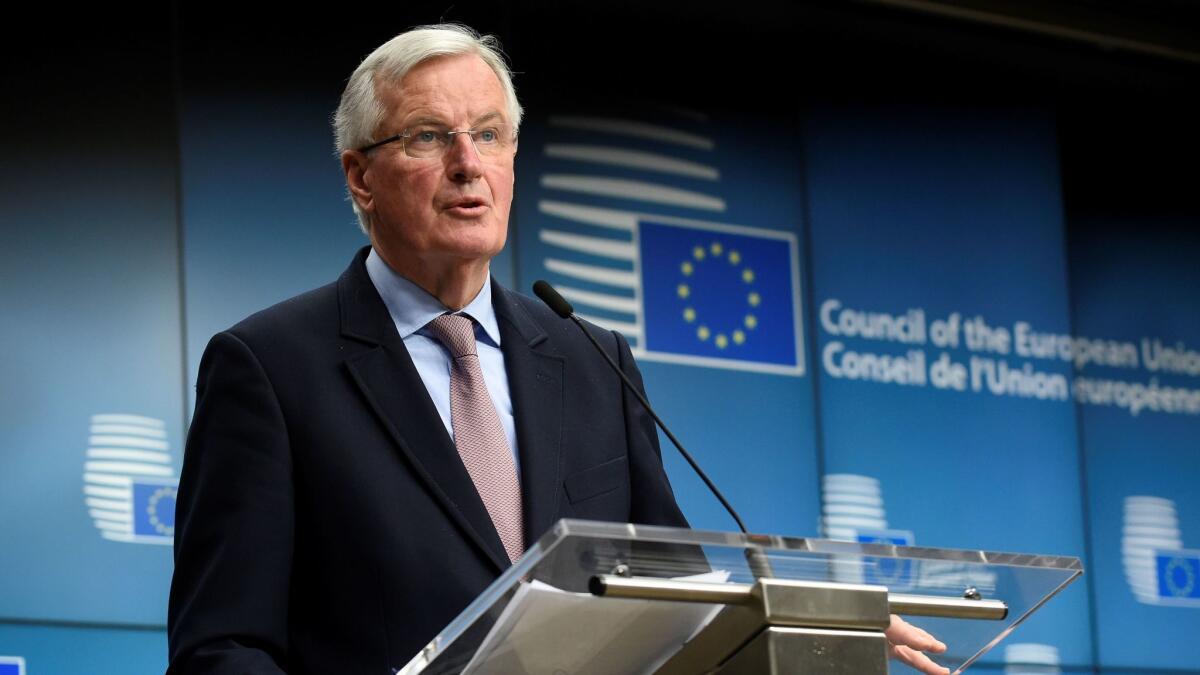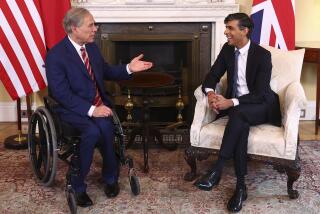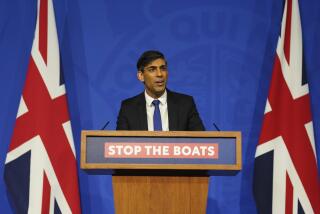European Union unveils Brexit draft, ramping up pressure on Britain

Concerned that time is fast running out, the European Union moved Wednesday to force Britain’s hand in Brexit negotiations by publishing a draft text that provocatively distills into legal language what they have — and even what they have not — agreed so far about Britain’s departure.
Britain officially leaves the EU on March 29 next year, but Brexit talks must conclude this fall so that parliaments have time to ratify the final withdrawal agreement. The new text summarizes all aspects of the talks so far, but takes a tough line on issues where British input is lacking.
“If we want to succeed in these negotiations, and I want to succeed, we must accelerate,” EU chief Brexit negotiator Michel Barnier said Wednesday as he unveiled the document. “In 13 months the U.K. will no longer be a member of the European Union. That’s what it wanted.”
While rumors about the document’s content have already angered some on the other side of the English Channel, Barnier told reporters that “this draft text contains no surprises for our British friends.”
EU leaders have been pushing Prime Minister Theresa May to provide more details about how she sees the border between Ireland and Northern Ireland operating, how long a transition period should last to help ease Britain out from next year, and to explain her government’s vision of their future relations.
But they have been frustrated by the lack of feedback, with negotiations essentially at the halfway mark.
By translating progress, or the lack of it, into a legal text, the EU is ramping up pressure on May, whose government is creaking amid divisions from within and growing opposition pressure from across the aisle in Parliament.
By far the most contentious section of the 120-page text — which is a draft and likely to be significantly altered — concerns the transit of goods, services and people across the border between EU member state Ireland and Northern Ireland, which is part of the United Kingdom.
Britain and the EU agreed in December that the all-but-invisible border would remain open after Brexit in 2019, but they left it unclear how that would happen in practice
Lacking “agreed solutions” so far, the EU draft suggests that Northern Ireland would remain within the bloc’s customs union, essentially creating a border in the Irish Sea between Britain and its own territory where customs checks would have to be carried out.
Another point likely to rile London is the transition period aimed at avoiding any policy cliff edge next year that would upset businesses, trade and markets. The text states that it will end on Dec. 31, 2020, a practical deadline as the EU’s current long-term budget, to which Britain contributes, expires then.
May’s government is seeking more time, but because it has suggested no other date and because legally the period cannot remain open-ended, the EU’s preferred date is the one being used.
More to Read
Start your day right
Sign up for Essential California for news, features and recommendations from the L.A. Times and beyond in your inbox six days a week.
You may occasionally receive promotional content from the Los Angeles Times.






